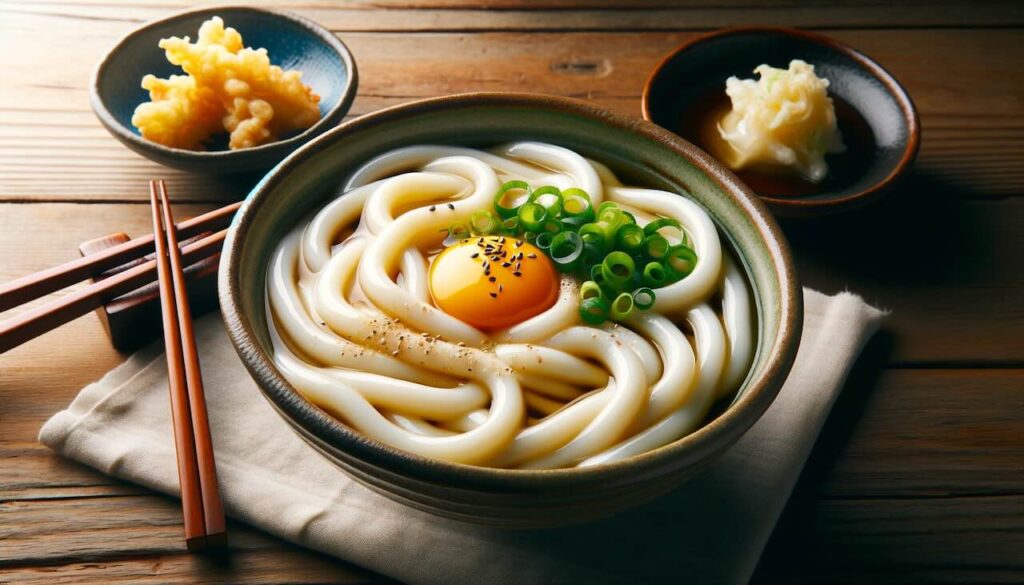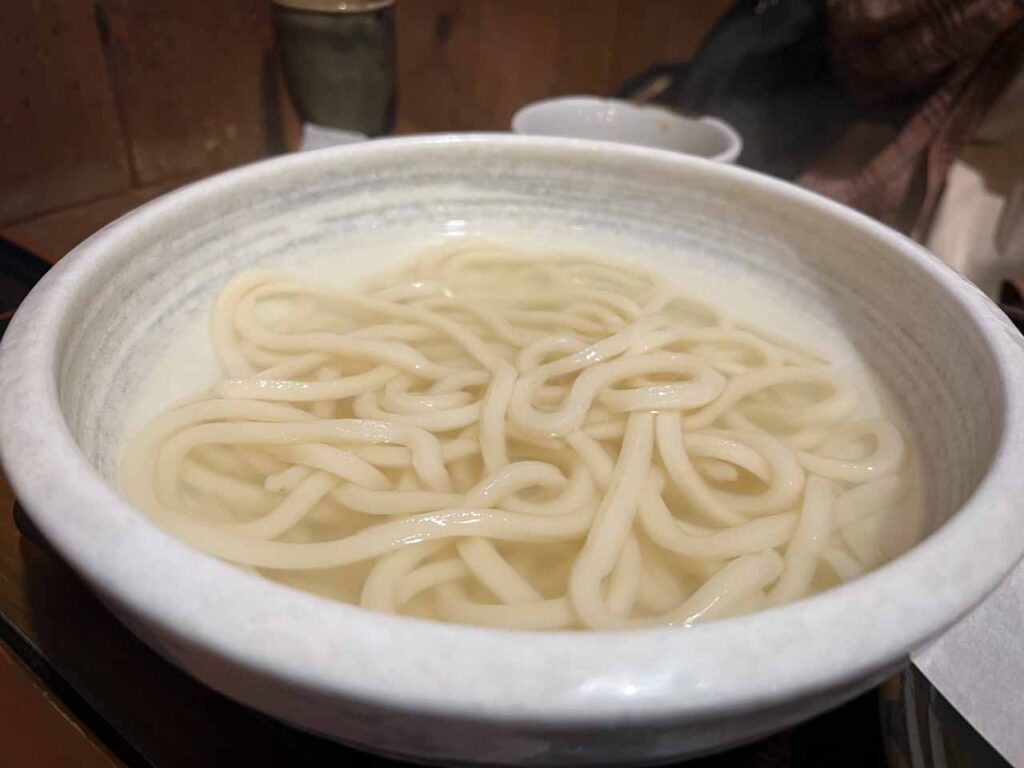Among Japan’s rich variety of noodle dishes, few are as comforting, simple, and surprisingly luxurious as Kamatama Udon. Rooted in Kagawa Prefecture’s celebrated Sanuki udon tradition, this warm bowl of thick, chewy noodles combined with a fresh egg and savory soy sauce offers a uniquely Japanese flavor experience that continues to charm both locals and travelers alike.
What Is Kamatama Udon?
At its core, Kamatama Udon (釜玉うどん) is a minimalist masterpiece. The dish starts with freshly boiled Sanuki udon noodles, renowned for their firm, elastic texture. While the noodles are still steaming hot, a raw egg is cracked directly on top. The residual heat gently cooks the egg, forming a silky, creamy coating around each strand of noodle.
To complete the dish, a drizzle of dashi-infused soy sauce — made from kombu (kelp) and katsuobushi (dried bonito flakes) — adds a deep umami flavor that perfectly balances the creaminess of the egg. Optional toppings such as chopped green onions, grated ginger, or crispy tempura bits (tenkasu) provide additional texture and brightness.
Despite its simple preparation, Kamatama Udon delivers a depth of flavor that showcases the essence of Japanese home-style comfort food.
The Origins of Kamatama Udon: A Modern Classic
While many Japanese noodle dishes have centuries-old histories, Kamatama Udon is relatively young. The name itself is a blend of two Japanese words:
- “Kama” (釜) — referring to the pot used to boil the noodles.
- “Tamago” (玉子) — meaning egg.
The combination reflects the dish’s most essential elements: freshly boiled noodles and a raw egg.
According to local accounts, Kamatama Udon first gained popularity in the 1950s at a small restaurant called Yamada-ya in Takamatsu City, Kagawa Prefecture. At that time, eggs were still somewhat precious in post-war Japan, making the addition of a fresh egg feel indulgent. This simple innovation quickly won over the hearts of locals, and Kamatama Udon gradually became a beloved regional specialty.
Today, it stands proudly alongside other Sanuki udon variations and has become a staple for visitors seeking an authentic Kagawa dining experience.
Order Kamatama Udon ingredients on Amazon
How to Prepare and Enjoy Kamatama Udon
One of the joys of Kamatama Udon is how easily it can be prepared at home with just a few key ingredients:
- Boil fresh Sanuki udon noodles in a large pot of water until fully cooked and springy.
- Drain quickly and serve immediately while still hot.
- Crack a fresh, high-quality raw egg directly onto the noodles. The residual heat partially cooks the egg, creating a creamy texture.
- Pour dashi-infused soy sauce over the top to season.
- Mix thoroughly with chopsticks until the noodles are evenly coated.
- Add toppings such as chopped green onions, sesame seeds, or tempura bits to customize your bowl.
Because the egg remains only lightly cooked, it’s crucial to use the freshest eggs possible, preferably pasteurized if you’re preparing the dish outside Japan.
Why Kamatama Udon Is So Popular
The enduring appeal of Kamatama Udon lies in its perfect balance of texture, flavor, and visual beauty:
- Chewy Sanuki noodles offer a satisfying bite that holds up to the creamy egg mixture.
- The raw egg transforms into a luscious sauce, coating each strand with richness.
- The dashi-soy sauce blend brings umami depth without overwhelming the natural wheat flavor of the noodles.
- The simplicity of the dish allows the high-quality ingredients to shine.
Visually, Kamatama Udon is equally inviting — the gleaming white noodles, golden yolk, and glistening sauce create an appetizing contrast that’s a feast for both the palate and the eyes.
Where to Try Kamatama Udon in Japan
While you can find Kamatama Udon throughout Japan today, Kagawa Prefecture remains its spiritual home. In Takamatsu and the surrounding Sanuki region, numerous udon shops specialize in this creamy variation. Many shops even allow you to customize your bowl with a variety of toppings and serving styles, showcasing the local passion for udon experimentation.
For travelers, visiting a Sanuki udon shop is more than just a meal — it’s a cultural experience that reflects Japan’s dedication to craftsmanship, seasonality, and simplicity.
Summary
Kamatama Udon is a modern yet deeply rooted expression of Japan’s udon culture, combining the chewy texture of Sanuki noodles with the creamy richness of a freshly cracked egg and the umami punch of dashi-infused soy sauce. Its simplicity hides a perfect balance of flavors that continues to captivate noodle lovers both in Japan and abroad. Whether enjoyed at a countryside udon shop or recreated at home, Kamatama Udon offers an accessible, comforting taste of Japanese culinary tradition.


